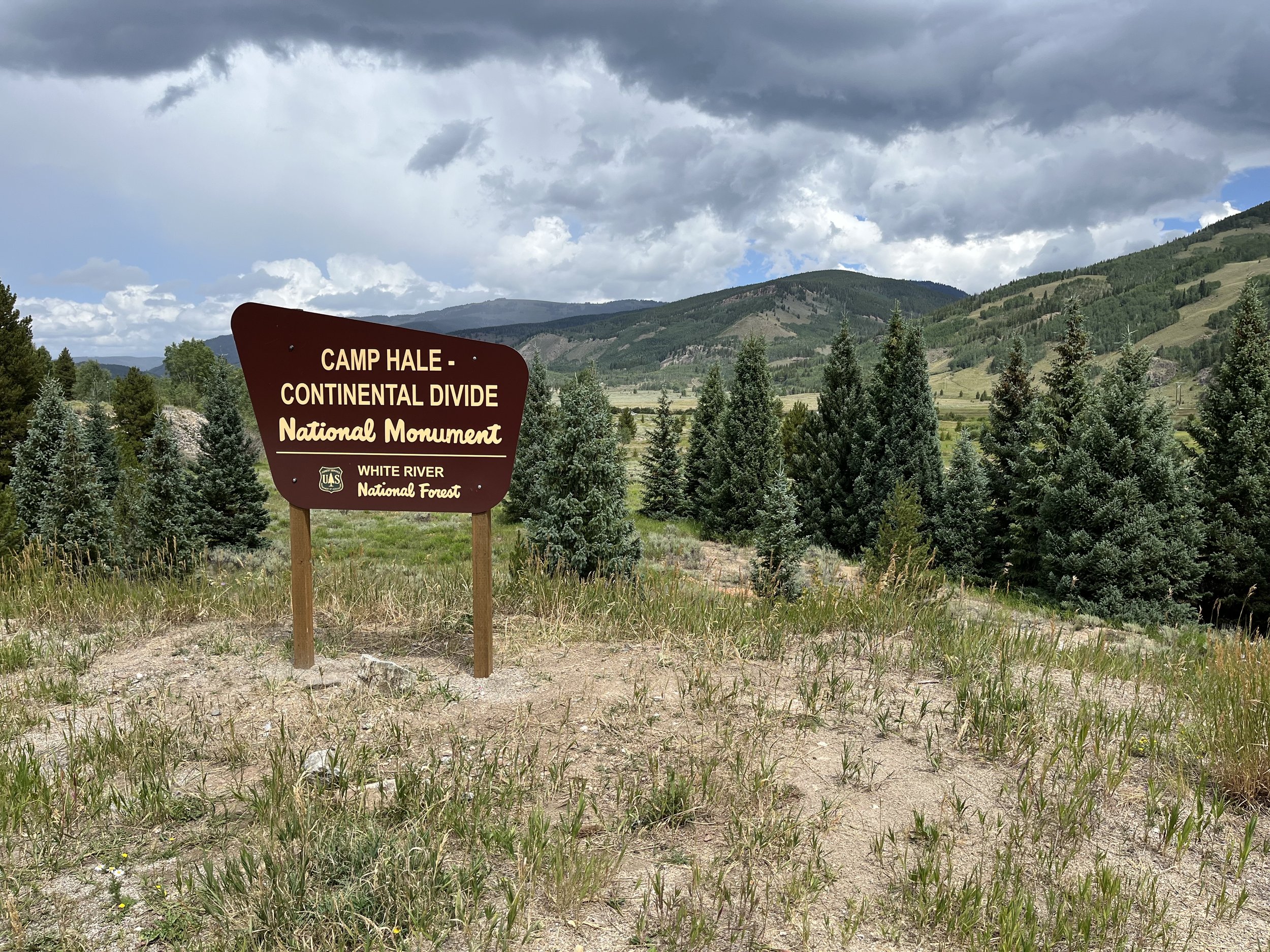Colorado. They Called it “Camp Hell” – Colorado’s WWII Training Site for Winter and Mountain Warfare
In 1942, U.S. Army planners began construction on a facility for training soldiers in tactics needed for cold weather and mountain fighting. Hoping to replicate conditions experienced in the European Theater, they selected an alpine valley in the Rocky Mountains north of Leadville, Colorado. Located an elevation of 2,800 meters, Camp Hale was named in honor of U.S. Army General Irving Hale and was designed to accommodate a full division of 15,000 soldiers. Crews began work to construct 245 barracks buildings, 100 mess halls, a 676-bed hospital, seven post exchanges, three fire stations, three theaters, and a 1,672 square meter fieldhouse used for boxing matches, basketball games, and special events. Land was acquired from local ranchers through eminent domain sales. The construction project lasted seven months at a cost of US$30 million.
Arriving from across the U.S., trainees learned to ski at Cooper Hill, located five kilometers south of the camp. Among those hired to train military personnel in mountaineering were brothers Jim and Lou Whittaker who later distinguished themselves as expert mountaineers (Jim was the first American to climb Mount Everest and Lou is known for having guided climbers to the top of Mt. Rainier more than 200 times). Nearby mountain areas were used by soldiers to learn rock climbing, survival skills, and winter combat tactics. Soldiers were also given instruction in how to use antitank rockets, mortars, rifle-launched grenades, and anti-tank mines. Winters at Camp Hall were brutal with some residents suffering from altitude sickness or frostbite. The camp’s heavy snowfall and intolerably cold temperatures contributed to its nickname: “Camp Hell.” Along with serving as a training facility, Camp Hale was used to intern 400 prisoners of war who had served with Field Marshall Erwin Rommel’s Afrika Corps.
In July 1943, the U.S. Army’s 10th Mountain Division was formed at Camp Hale under Brigadier General George P. Hays. Among its contributions to the war, the 10th participated in the Battle of Riva Ridge in the Northern Apennine Mountains, defeating five elite German divisions in the final months of the war. One who served in the 10th was future U.S. Senator and presidential candidate Bob Dole who was severely injured by shrapnel in April 1945. Another was environmentalist David Brower, founder of Friends of the Earth. As the war in Europe began to wind down, the camp’s buildings were disassembled by German prisoners and moved to Camp Carson (now Fort Carson). In November 1945, Camp Hale was formally decommissioned. In subsequent years, returning veterans made use of their mountain and winter expertise by founding more than 60 Rocky Mountain ski resorts including Vail.
After the war, parts of the camp continued to be used by the federal government. For example, in 1963 the CIA used the former base to train Tibetans. Two years later the land was transferred to the U.S. Forest Service (USFS), becoming part of White River National Forest. In 2022, the former site of Camp Hale and surrounding areas used for training (a total of 218 km2) were designated Camp Hale Continental Divide National Monument under the oversight of the USFS.
We entered the camp from a turnoff along U.S. Highway 24 and followed a spur road through Gate #3, now marked by two stone columns. This route extends northeast along 13th Street. After crossing a bridge over the Eagle River, we stopped at concrete foundations and buttresses, the remains of the Field House. The camp’s former parade grounds could be seen just south. We continued past “C” Street and an area where mule stables were once located, and turned right onto “D” Street towards the rifle range. Just east of the camp is a rocky bluff where soldiers received instructions in rock climbing and rappelling. Making a U-turn, we drove north on “D” Street and past the site of the camp’s former hospital.
Given its serenity, it was difficult to image the valley being covered with a thousand buildings. The monument protects two units, the valley where camp buildings and other facilities were located, and the mountainous Tenmile Area where soldiers were taught winter and mountain fighting. Reflecting on my visit, I recall a chance meeting with Lou Whittaker many years before I visited Camp Hale. Lou was sitting on a bench in his outfitter shop (Rainier Mountaineering) near the base of Washington’s Mt. Rainier. Looking back, I wish could have asked him about his work at Camp Hale in the early 1940s.






